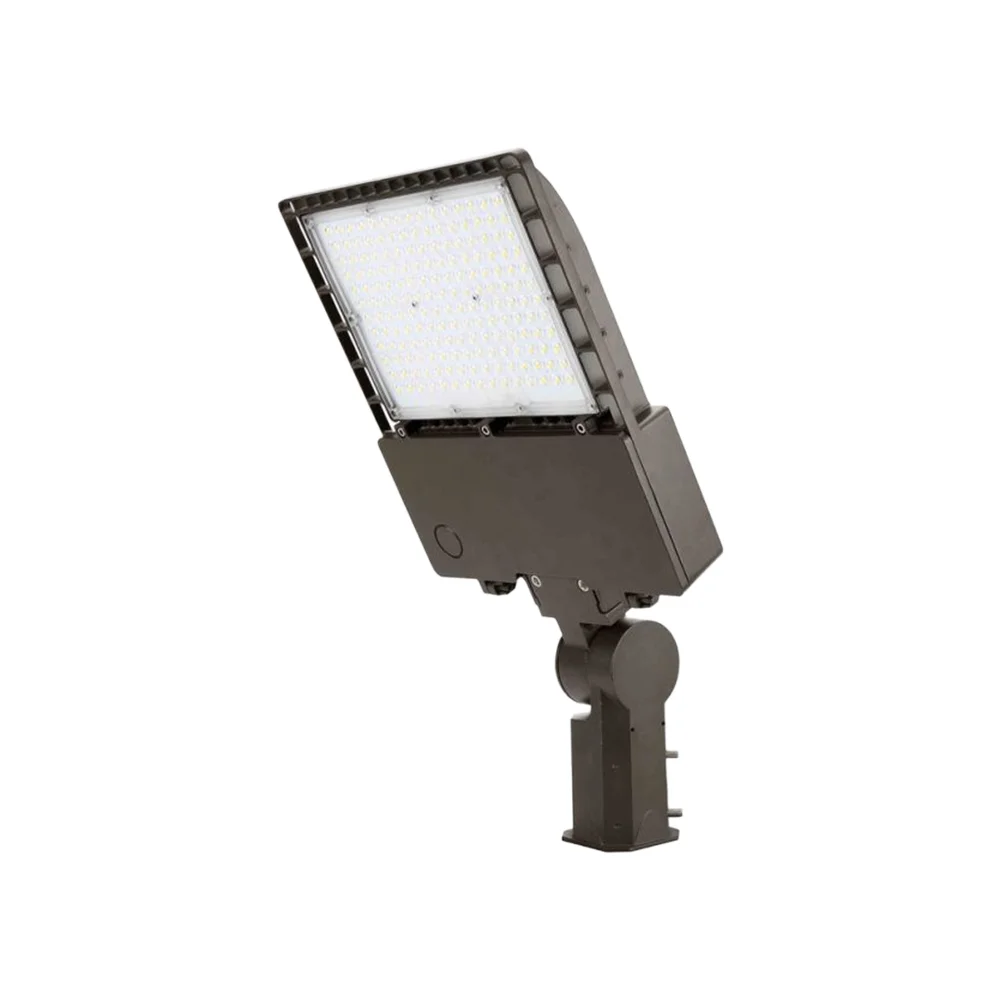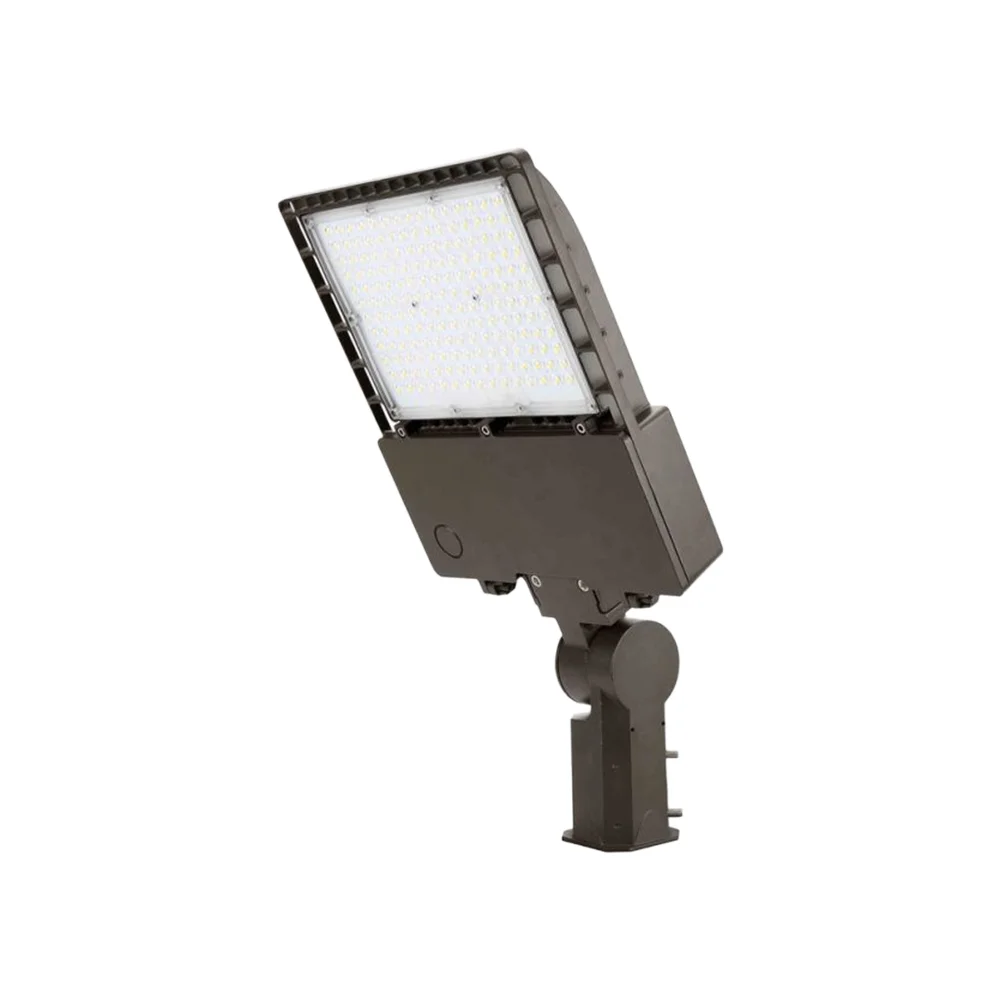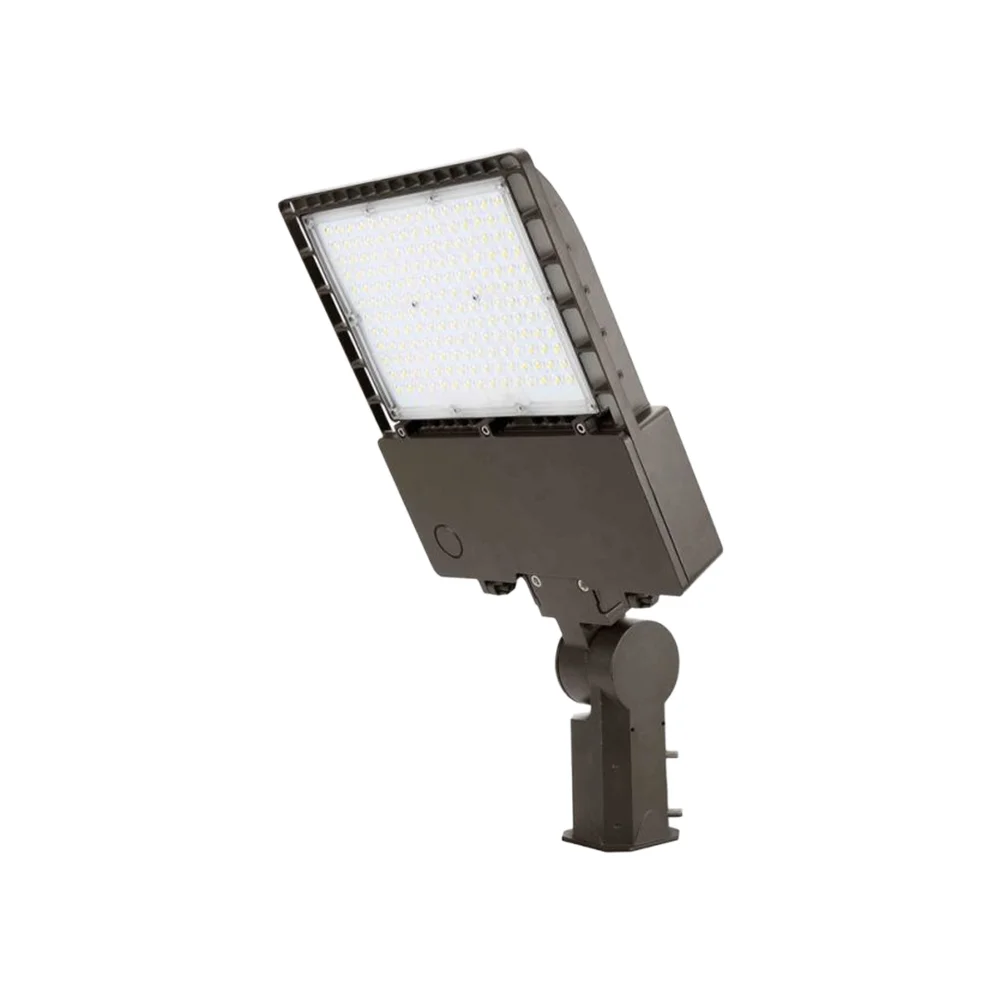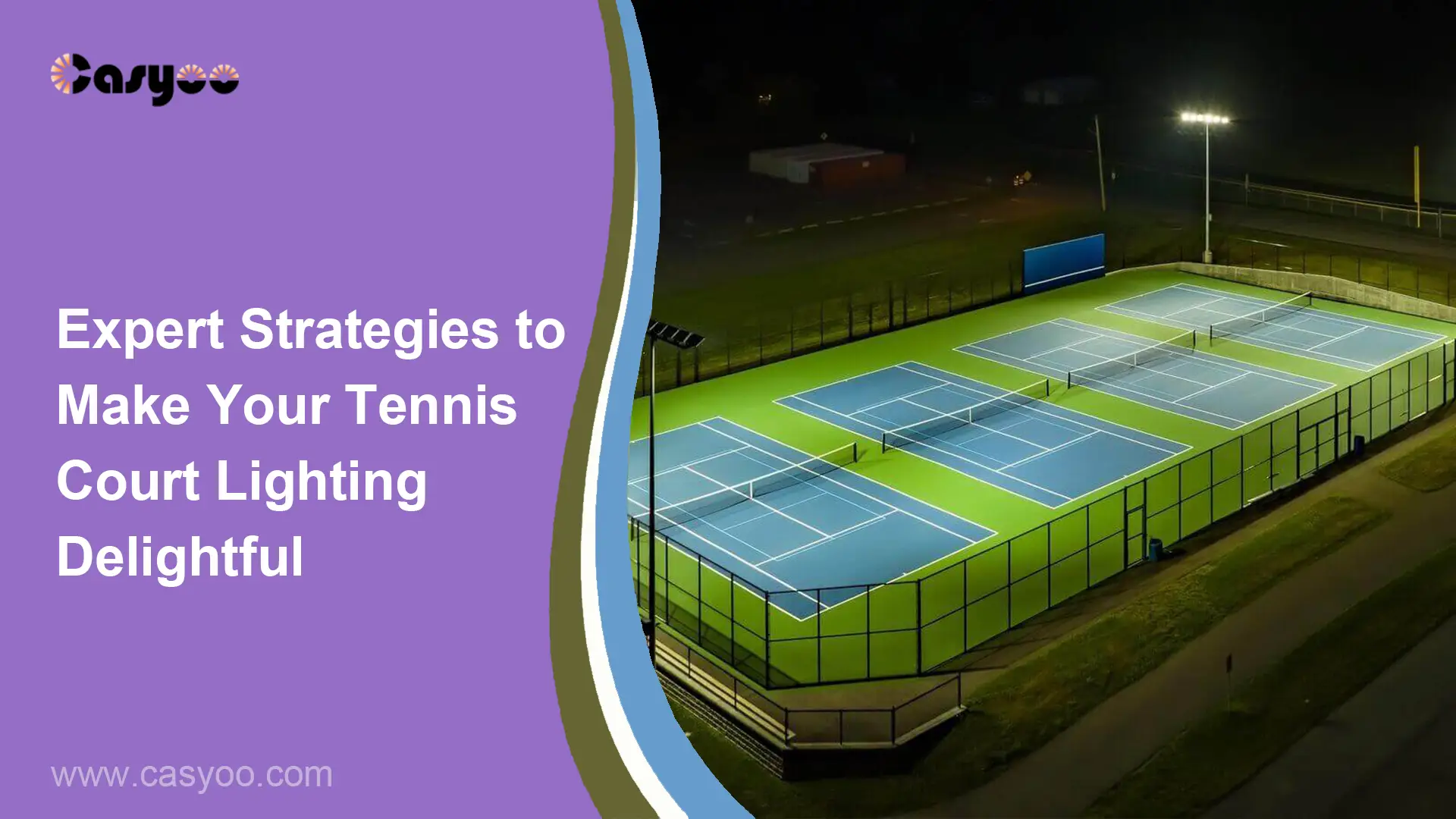If you want to ensure the successful operation of an outdoor tennis court, it is crucial to prioritize effective lighting design. Inadequate lighting can lead to complaints from players and spectators about glare and a subpar playing experience. What you need is the right tennis court lighting solution. Here, we’ll delve into the dimensions of a standard tennis court, the recommended Lux level, factors to consider for tennis court lighting, as well as specific lighting solutions.
Dimensions of the tennis court
According to International Tennis Federation regulations, a standard tennis court should cover an area of at least 670 square meters, measuring 36.60 meters in length and 18.30 meters in width. Within this area, the doubles size is 23.77 meters long and 10.97 meters wide. The singles size is 23.77 meters long and 8.23 meters wide. It is essential to leave a margin of not less than 6.40 meters behind each end line and a margin of not less than 3.66 meters outside each sideline to ensure ample space for player movement. The distance between the net posts installed on the court should be 12.80 meters. The top edge of the center of the net should be 0.914 meters above ground level.
Standard Lux level for a tennis court
The chart below shows the recommended values for tennis court lighting parameters by the International Tennis Federation
| Outdoor Tennis Court Lighting Standard | |||||||||||||||
| Classification | Eh(lx) | Ev(lx) | Eh Uniformity | Ev Uniformity | Ra | Tcp(K) | |||||||||
| U1 | U2 | U1 | U2 | ||||||||||||
| PPA | TPA | PPA | TPA | PPA | TPA | PPA | TPA | PPA | TPA | PPA | TPA | ||||
| Training | 250 | 200 | / | / | 0.4 | 0.3 | 0.6 | 0.5 | / | / | / | / | ≥65 | 4000 | |
| Domestic competition | 500 | 400 | / | / | 0.4 | 0.3 | 0.6 | 0.5 | / | / | / | / | ≥80 | 4000 | |
| International competition | 750 | 600 | / | / | 0.4 | 0.3 | 0.6 | 0.5 | / | / | / | / | ≥80 | 4000 | |
| Camera distance | 25m | / | / | 1000 | 700 | 0.5 | 0.3 | 0.6 | 0.5 | 0.5 | 0.3 | 0.6 | 0.5 | ≥80 | 4000/5000 |
| 75m | / | / | 1400 | 1000 | 0.5 | 0.3 | 0.6 | 0.5 | 0.5 | 0.3 | 0.6 | 0.5 | ≥80 | 4000/5000 | |
| HDTV | / | / | 2500 | 1750 | 0.7 | 0.6 | 0.8 | 0.7 | 0.7 | 0.6 | 0.8 | 0.7 | ≥90 | 4000/5000 | |
Eh (Horizontal Illumination): This refers to the intensity of light shining on the court ground to ensure clear visibility of the ball’s movement and the court boundaries.
Ev (Vertical Illumination): This measures the intensity of light in the vertical direction above the court, ensuring that players can clearly see the ball’s position when swinging the racket.
U (Uniformity): This ensures uniform light coverage throughout the court without any blind spots. U1 represents the ratio of the minimum recorded illumination value on the playing field to the average value, while U2 represents the ratio of the minimum recorded illumination value to the maximum value.
PPA (Principal Playing Area) and TPA (Total Playing Area): These are key areas where lighting levels need to be optimized to meet specific requirements.
Tcp (Correlated Color Temperature): The color temperature of the lighting, which can impact the visibility and overall ambiance of the court.
Factors to consider for tennis court lighting
Several critical factors should be considered when planning the lighting for a tennis court.
Illuminance
The speed and direction changes in tennis make it essential for athletes and spectators to have sufficient illumination to clearly track the ball’s speed and trajectory. Therefore, tennis courts require higher illuminance levels compared to other sports. Specific values should adhere to international standards based on different usage scenarios.
Illumination Uniformity
Good illumination uniformity is crucial to avoid excessively bright or weak areas on the court. Uniform illumination not only improves the game’s fairness, but also provides spectators with a comfortable and safe viewing experience.
CRI measures how well a light source captures an object’s color when it is illuminated. In tennis matches, accurate color vision aids players in identifying the ball’s position and trajectory, enabling precise judgments and reactions. High-quality lighting with a good color rendering index enhances the overall game experience and improves its quality.
Installation Location
It is optimal to install lights on both sides of the tennis court rather than at the four corners. If four lights are used, two lights on one side should be placed at 6 meters and 18 meters, rather than at the corners. Corner installations may cause glare and uneven illumination, impacting the players’ performance.
Light Source Selection
While metal halide lamps have been traditionally used as tennis court lights, LED module lamps are now the preferred choice. They have high energy efficiency, long lifespan, good heat dissipation, high color rendering, and waterproof capabilities. LED lights are particularly advantageous for tennis courts requiring prolonged lighting.
Tennis court lighting solutions
Tennis court lights are typically installed using sockets, and the light poles are often integrated by fence manufacturers. Generally, 6 to 8 light poles, ranging from 8 to 12 meters in height, are used. A specific lighting fixture designed for tennis courts is installed on each pole, typically utilizing 200-300W LED flood lights. For cost-effective options, one light per pole may suffice. Higher budget may allow for the installation of two lights per pole. Additionally, having the ability to control the lighting fixtures in groups through dimming functions is beneficial for accommodating competitions of varying levels at the same venue.
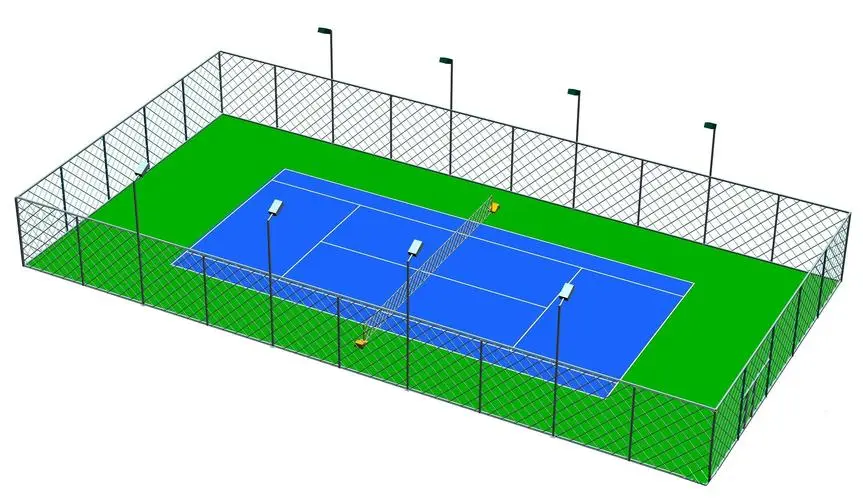
Conclusion
Understanding the specifications, international standards, and layout strategies for tennis courts provides a solid foundation for effective lighting design. By focusing on factors such as illuminance, illumination uniformity, and installation location, common mistakes in lighting design can be avoided. Reliable LED manufacturers like Casyoo can further tailor detailed lighting solutions based on specific site needs. Contact us to learn more!
